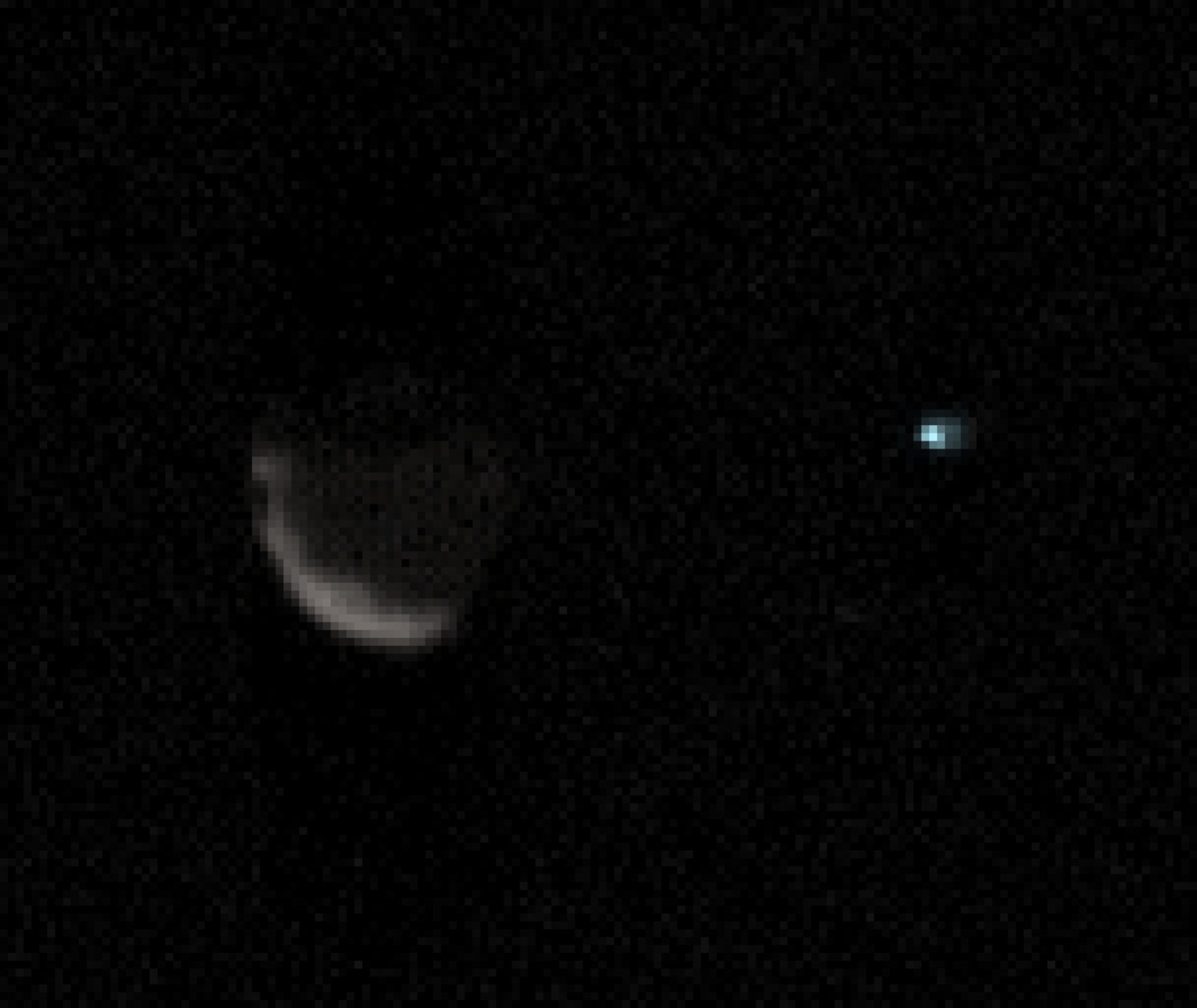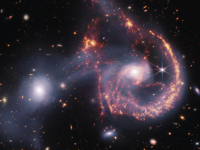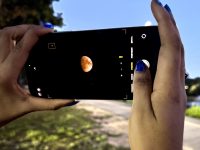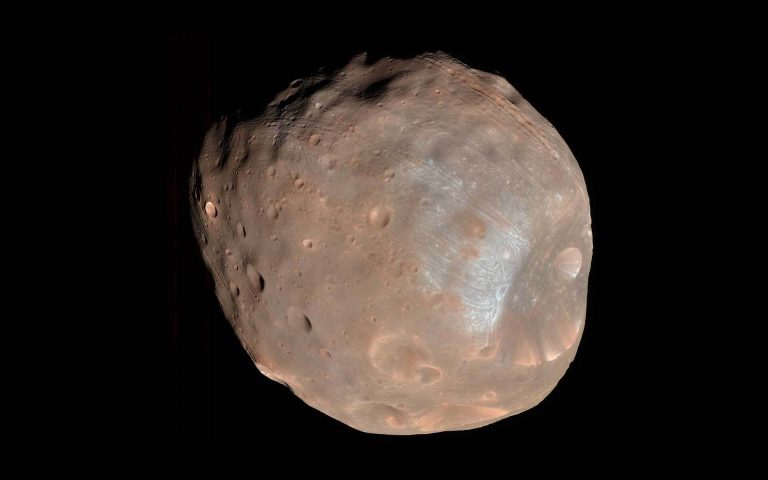
Robotic Martians can see blue Earth in Mars‘ sky.
The Curiosity rover, a car-sized NASA robot looking to find evidence of past habitability on the Red Planet, recently snapped an image of Mars’ misshapen moon, Phobos, and Earth next to each other.
“It’s the first time an image of the two celestial bodies have been captured together from the surface of Mars,” the space agency explained.
In the photo below, you can spot a ridge of Mars’ Mount Sharp at the bottom of the image. The upper right contains both Phobos — a moon 17 miles long — and Earth, which from some 200 million miles away appears as a bright speck of bluish light. (The second image is a blown-up view of the two objects.)
“From the rover’s perspective, the inset area would be about half the width of a thumb held at arm’s length,” NASA explained.

Credit: NASA / JPL-Caltech / MSSS

Credit: NASA / JPL-Caltech / MSSS
The Curiosity rover captured this image on Sept. 9, 2024, during its 4,295th Martian day (called a “sol”) on Mars. It’s been rumbling over Martian terrain for over 12 years, and is currently ascending the 3.4-mile (5.5-kilometer) high Mount Sharp, a place that once experienced dramatic Martian floods.
Compared to our moon, which appears almost perfectly round, Phobos is misshapen. It’s not massive enough for its gravity to form a sphere. What’s more, Phobos has been hit time and time again by potent space rocks. “Phobos was nearly shattered by a giant impact, and has gouges from thousands of meteorite impacts,” NASA noted. The glaring impact site is Stickney crater, which is 5.6 miles (nine kilometers) wide.
As Curiosity continues its long slog up Mount Sharp, its robotic sibling, the Perseverance rover, is sleuthing the irradiated Martian surface for past evidence of microbial life. This means “chemical signatures and structures that could possibly have been formed by life billions of years ago,” the agency said.
Still today, no evidence of life has been found on Mars — though NASA has spotted some compelling geologic leads. It’s clear, however, that the now-desert planet once teemed with lakes and rivers, back when it was a warmer, more hospitable, world.





















0 Comments